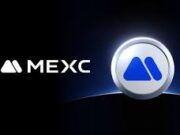Introduction: A New Shopping Era on the Horizon
Imagine walking into your favorite café, asking for “a tall low-fat latte please,” and within seconds the drink is ready — all without you pulling out a wallet or tapping a card. That scenario may sound futuristic, yet according to investor and Kevin O’Leary (the Shark Tank co-host), it’s closer than we think. He foresees a world where artificial intelligence (AI) takes care of the purchase process and blockchain handles the payment — making retail transactions seamless, instantaneous, and entirely automated. (Cointelegraph)
What follows is a dive into O’Leary’s vision, how it could reshape retail, the technical hurdles ahead, and what consumers and businesses should be prepared for.
O’Leary’s Vision: AI Meets Blockchain in Retail
O’Leary recently shared his prediction in a short video posted to X (formerly Twitter)—and the message was clear: AI will soon dominate retail transactions, while blockchain will be the payment backbone. He put it quite succinctly:
“You simply talk to your phone and say, I want a tall, low-fat latte, please. I’m going to be there in 90 seconds. That’s it.” (Cointelegraph)
According to him, the flow would go something like this:
- Your phone listens (or your wearable) and you state your preference.
- The AI assesses your location, nearby retailers (e.g., café, quick-serve burger joint, grocery store).
- It selects the optimal outlet and places the order.
- Blockchain handles the payment, instantly and securely. • The retailer already knows who you are when you walk in. (Cointelegraph)
In his words: “AI is about to collide with blockchain and change everything. Imagine ordering your coffee by voice, AI finds the café, and blockchain processes your payment instantly. That’s the next revolution in business.” (TradingView)
This makes it clear: for O’Leary, it’s not just one technology but the fusion of AI + blockchain that will reshape retail.
Concern for Retail & Consumers
For Consumers
- Convenience & speed: No need to stand in line, pull out a card or phone. The system knows you and what you want.
- Personalization: The AI component could anticipate preferences, reorder items you frequently buy, or pick the best outlet automatically.
- Reduced friction: The checkout process becomes invisible; the boundary between “choosing” and “paying” collapses.
For Businesses & Retailers
- Operational efficiency: Fewer checkouts, faster throughput, fewer manual steps.
- Enhanced customer engagement: With AI knowing the customer and preferences, brand loyalty and tailored offers could improve.
- Data-driven inventory & pricing: If the AI knows what’s coming, the store can optimize stock, reduce waste, and adjust pricing dynamically.
- New payment model: With blockchain-based settlements, the dependency on traditional card networks and intermediaries could reduce.
All things considered, the integration of AI + blockchain could redefine retail at a foundational level.
The Technology Behind the Vision
It helps to unpack two pieces: what AI is doing, and what blockchain is doing.
AI’s Role:
- Agentic AI systems are already doing “everyday tasks” like reminding you to buy milk, comparing prices across stores, and managing shopping lists. For example, one system tells a user when they’re out of milk and even suggests when to restock. (TradingView)
- In the future, the AI will handle the order orchestration: selecting a retailer, placing the order, scheduling pick-up or delivery, and interfacing with the payment layer.
Blockchain’s Role:
- Blockchain handles payments and settlement in a transparent, secure, decentralized way. The idea is that once the AI triggers the purchase, the payment executes automatically via smart contracts or blockchain logic. (Coinfomania)
- However, O’Leary notes a key challenge: existing blockchains (like Ethereum) struggle with scale. They process transactions linearly, which creates a “toll road” effect when there are millions of transactions. He says, “It’s a long highway on a way to a toll road for authentication of the transaction, and when there’s too many going on the highway at the same time, they get stuck at the toll, they get jammed up.” (TradingView)
- One potential architectural fix: Directed Acyclic Graph (DAG)-based systems that allow parallel processing instead of linear blocks. O’Leary mentions networks like Hedera and Nano as examples. (Cointelegraph)
So, the future O’Leary paints is: AI picks the item, DAG-like blockchain handles the payment instantly, and the store knows you’re coming. The result: a near-frictionless retail experience.
The Roadblocks: Why It’s Not Here Yet
Although the vision is compelling, O’Leary is candid that we don’t have the technology yet to roll this out at retail scale. Some of the impediments include:
- Scaling issues: As mentioned, linear-blockchain systems like Ethereum struggle with high throughput. When millions of transactions occur simultaneously (think big-box retail, fast food chains), delays and high fees become a barrier. (MEXC)
- Infrastructure readiness: Retailers, point-of-sale systems, supply chains, and consumer devices will all need to interoperate with AI-blockchain stacks.
- Standards & interoperability: Multiple chains, multiple AI vendors — without standard protocols the ecosystem becomes fragmented.
- Privacy & security concerns: If your AI and blockchain know everything about you, your purchases, your location — data governance becomes critical.
- Adoption lag: Both retailers and consumers must adopt new behaviours. Until the ROI is clear, many may hesitate.
In short: the pieces are emerging, but we aren’t fully there yet.
What Businesses Should Do Now
Retailers, brands, and businesses don’t need to wait on the sidelines. Here are proactive steps they can take:
- Experiment strategically: Run pilot projects that integrate AI-driven ordering with blockchain payment trials (even in small scale).
- Collaboration is key: Partner with ecosystem players (AI vendors, blockchain providers, payment tech firms) to co-build infrastructure.
- Focus on data readiness: Make sure you have clean consumer data, inventory analytics, location-based services, and integration with payment systems.
- Keep an eye on standards: Watch the evolution of DAG systems and next-gen blockchains that can scale. As O’Leary pointed out, the first chain to support “millions of independent transactions a day” will lead. (Cointelegraph)
- Educate consumers: Roll out transparent communication about how AI + blockchain will improve experiences (speed, security, personalization). Early adopters will help shape reputation.
If you plan ahead, you’ll be ready when the tipping point arrives.
What Consumers Should Know and Expect
For the everyday shopper, this shift means some tangible changes:
- Faster transactions: Wait-time at checkout could shrink dramatically.
- Personalized experience: The “store” knows you, which products you prefer, and your location — but this also means more data-sharing.
- Automated replenishment: Maybe you don’t even visit the store; your AI orders what you need before you realize.
- Transparent payments: Blockchain records will make it easier to trace where your money went — though that also raises privacy concerns.
- Change in payment methods: Less reliance on physical cards or cash; more voice, biometrics, or IoT-triggered payments.
In short, convenience upgrades for you—but with a backdrop of technology managing the process behind the scenes.
Why This Matters for the Future of Retail
When you step back, O’Leary’s prediction is not just about coffee orders—it signals the next major revolution in business. He says exactly that: “AI is about to collide with blockchain and change everything.” (Cointelegraph)
Here’s why it’s important:
- Business model shift: Retail will morph from discrete purchases to continuous, AI-managed consumption patterns.
- Payment architecture transformation: The old card-network model may be disrupted by blockchain settlement systems.
- Competitive advantage: The company that owns the AI-order + blockchain-payment stack could dominate across retail channels.
- Societal implications: With technology orchestrating what you buy, when and from whom, questions about choice, agency, privacy, and trust become central.
All of this suggests that retail over the next decade might be more dramatically changed than many anticipate.
Final Thoughts
Kevin O’Leary is often seen as provocative, but his vision here is grounded in technological trajectories we’re already observing. AI-driven ordering is already in pilot phases; blockchain payment models are evolving; the retail industry is hungry for innovation.
Still, the full vision — voice commands, nearby retail selection, automatic payment, zero checkout friction — requires a confluence of AI maturation, blockchain scalability, and retailer infrastructure upgrade. As O’Leary himself conceded: “We don’t have the technology yet… to do what I just described.” (TradingView)
So should you wait, or act now? The answer: act now. Even if the fully automated voice-purchase world is a few years off, incremental steps (AI personalization, blockchain trials, smart checkout) are underway. Those who begin adapting will be positioned ahead when the tipping point arrives.
When that day comes, the latte you want might simply appear — without you ever swiping, tapping, or interacting with a checkout line.
Sources:
- “AI and Blockchain Will Spark Retail Revolution: Kevin O’Leary” – Cointelegraph. (Cointelegraph)
- “AI may soon order your coffee as blockchain handles instant payments” – CoinCentral. (CoinCentral)
- “Kevin O’Leary Foresees AI Automating Retail Purchases via Blockchain, Beyond Ethereum’s Scalability” – MEXC/BitcoinEthereumNews. (MEXC)
- “AI and Blockchain Will Change Retail Payments” – Coinfomania. (Coinfomania)
- “Smart Money Maker guest Kevin O’Leary predicts AI will automate most retail purchasing” – Bitget News. (Bitget)



























